Trees Birds Mammals Fish Amphibians Reptiles
Wild Algarve
Bookshop
Panaeolina foenisecii (Pers.) Maire - Brown Mottlegill
Phylum: Basidiomycota - Class: Agaricomycetes - Order: Agaricales - Family: Insertae sedis (Not yet assigned)
Distribution - Taxonomic History - Etymology - Toxicity - Identification - Reference Sources
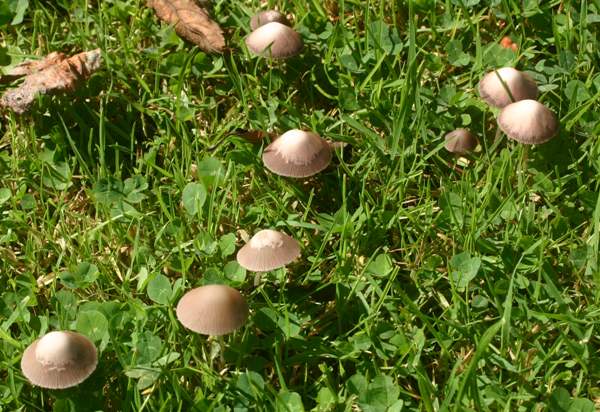
Also commonly referred to as the Mower’s Mushroom and the Haymaker, Panaeolina foenisecii springs up on any lawn that is regularly mown but not intensively dosed with lots of artificial fertilisers or selective herbicides. It is probably the most common of the ‘common or garden’ lawn mushrooms, and unfortunately it is inedible and can cause sickness if eaten. (Toddlers are particularly vulnerable!)
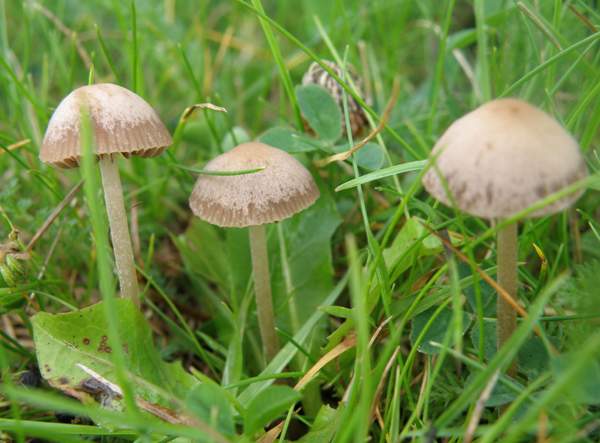
The hygrophanous nature of the cap means that colour is not a significant identifying feature; some caps may be dark brown while others, in drier parts of the same lawn, may be a pale creamy-beige that appears white in bright sunlight.
Distribution
Brown Mottlegill fungi occur in most parts of the world. They are very common and widespread throughout Britain and Ireland as well as on mainland Europe and in North America.
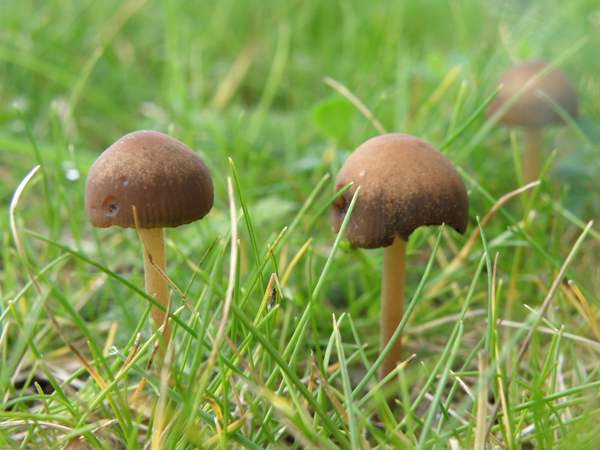
Taxonomic history
This species was described in 1800 by Christiaan Hendrick Persoon, who named it Agaricus panaeolinia (at a time when most gilled fungi were initially placed in the Agaricus genus, since largely distributed across many newer genera). French botanist and mycologist René Charles Joseph Ernest Maire (1878-1949) transferred the Brown Mottlegill to its present genus in 1933.
Panaeolina foenisecii is the type species of the Panaeolina genus, which contains very few species (and only this one in Britain).
Down the ages this ubiquitous little brown mushroom has acquired many synonyms including Agaricus foenisecii Pers., Prunulus foenisecii (Pers.) Gray, Psilocybe foenisecii Pers.) Quél., Psathyra foenisecii (Pers.) G. Bertrand, Panaeolus foenisecii (Pers.) Kühner, and Psathyrella foenisecii (Pers.) A.H. Sm.
There is no concensus about the correct taxonomic position of fungi in the genera Panaeolus and Panaeolina, which some authorities include in the family Strophariaceae and others in the Bolbitiaceae. (I have placed our pictures of this species in with those of other members of the family Bolbitiaceae.)
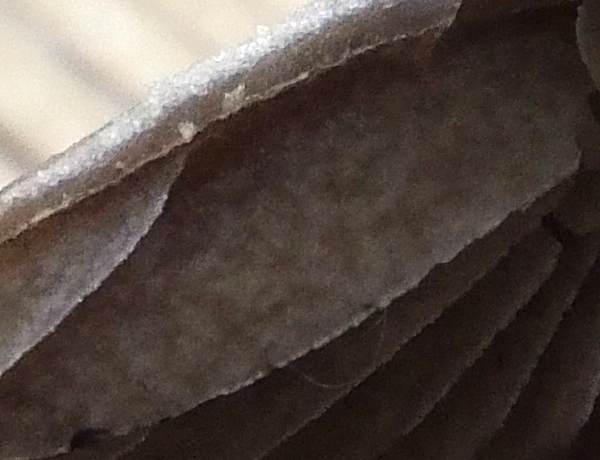
Etymology
Panaeolina, the genus name of this little brown mushroom, suggests that this species has similarities with those in the genus Panaeolus. Panaeolus means variegated - and indeed the caps of many Panaeolus species are zoned, but the generic name is not a reference to the cap colouring but to the mottled or variegated colouring of the gills. The mottling on the gills of Panaeolina foenisecii is illustrated above; this effect is due to patches of spores of different parts of the gill surface reaching maturity at different times. One other obvious difference between fungi in these two genera can be seen provided you have access to a high-powered microscope: you will see that the spores of Panaeolus fungi are smooth while those of Panaeolinus are minutely roughened.
The specific epithet foenisecii simply refers to haymaking.
Toxicity
There is evidence that children can become ill after eating theses little brown mushrooms, and so on a precautionary basis at least they should be treated as toxic toadstools and not gathered for eating. (Depending on where in the world they are growing, there is research showing that there can be small amounts of psilocybin in some these fungi, but almost certainly at much too low a concentration for them to be hallucinogenic.)
Identification guide
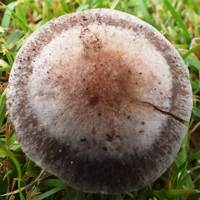 |
Cap
1 to 2cm across, caps are initially bell-shaped or conical, expanding to become broadly convex; hygrophanous, medium to dark brown when moist, drying from the centre outwards to a creamy-beige. |
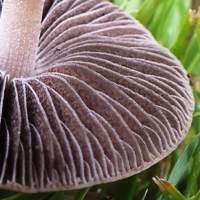 |
Gills
Gills of Panaeolina foenisecii are adnate; pale brown at first becoming mottled dark brown.
Stem
Stems of the Brown Mottlegill are 4 to 7cm long and 3 to 5mm diameter; cream flushed towards base with mid brown; cylindrical; finely fibrillose; no stem ring. |
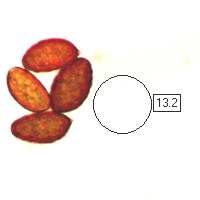 |
Spores
Lemon shaped with a roughened surface and a germ pore (see picture, left). Dimension range 11-18 x 6-9µm.
Spore print
Dark brown. |
Odour/taste |
Odour is slightly unpleasant but not diagnostically distinctive. |
Habitat & Ecological role |
Saprobic, on lawns, roadside verges and other grassy places. |
Season |
April to December in Britain and Ireland. |
Similar species |
Stropharia
semiglobata, the Dung Roundhead, has a
transient ring and leaves a brown spore print.
Panaeolus fimicola, the Turf Mottlegill, has a dark-brown cap when wet and dries out to become mid brown. |
Reference Sources
Fascinated by Fungi, 2nd Edition, Pat O'Reilly 2016, reprinted by Coch-y-bonddu Books in 2022.
British Mycological Society. English Names for Fungi
Dictionary of the Fungi; Paul M. Kirk, Paul F. Cannon, David W. Minter and J. A. Stalpers; CABI, 2008
Taxonomic history and synonym information on these pages is drawn from many sources but in particular from the British Mycological Society's GB Checklist of Fungi.
Top of page...
Fascinated by Fungi. Back by popular demand, Pat O'Reilly's best-selling 450-page hardback book is available now. The latest second edition was republished with a sparkling new cover design in September 2022 by Coch-y-Bonddu Books. Full details and copies are available from the publisher's online bookshop...